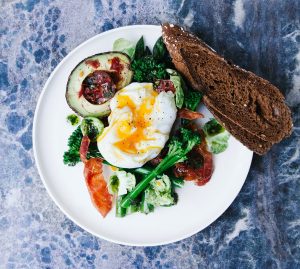How important are iron-rich foods for women’s health?
When it comes to essential nutrients for women’s health, iron is top of the list. While animal sources of iron are the go-to, plant-based sources contain other beneficial nutrients which can be boosted when served alongside complimentary foods.
What is iron and why is it important for women’s health?
Iron is an essential component of hemoglobin, a protein in red blood cells that carries oxygen from the lungs to the rest of the body. Iron plays a crucial role in various bodily functions, including energy production and immune system support.
Women have higher iron requirements due to menstrual blood loss, pregnancy, and breastfeeding, with recommendations at 18-27mg per day. Without enough iron, your body can’t produce enough healthy red blood cells, resulting in iron deficiency. Symptoms of iron deficiency include fatigue, weakness, pale skin, and impaired cognitive function, making it crucial to ensure adequate intake.
Types of iron
Haem iron is the iron found in animal foods like meat, chicken and fish. It is absorbed more efficiently in the body compared to non-haem iron which is found in plant-foods. While lean meats are a good source of nutrients, consumption of greater than 100-120g of red meat per day (which is double the recommended amount) is associated with an increased risk of some types of cancers.
As such, consumption of animal foods alongside plant-sources of iron is a great way to obtain the same nutrients with additional benefits such as increased fibre content. Additionally, the iron content of plant-foods can be boosted when consumed alongside complementary foods – so what does this look like?
Iron-rich plant foods
Legumes
– Lentils: Lentils are a powerhouse of nutrition, providing a substantial amount of iron along with protein, fibre and essential vitamins. A cup of cooked lentils contains about 3mg of iron.
– Chickpeas: These versatile legumes offer approximately 2.7mg of iron per cup. Chickpeas can be added to salads, stews, and even made into hummus for a tasty and iron-rich snack.
– Kidney beans: A staple in many diets, kidney beans deliver around 3.1mg of iron per cup. They’re perfect for adding to soups, burritos, or as a base for veggie burgers.
Wholegrains
– Breakfast cereals: Breakfast cereals like All Bran and Weetbix contain 3.2-4.2mg of iron per 30g serve. Weetbix is so versatile and can also be made into slices, muesli bars, biscuits or desserts! (See some delicious recipe inspiration here!)
– Oats: A popular breakfast choice, oats offer about 1.1mg of iron per 30g. They can be enjoyed as oatmeal, added to smoothies, or used in baking.
– Brown rice: While not as high in iron, brown rice still contributes to your daily iron intake with about 0.7mg per cup.
Green vegetables
– Spinach: One of the most well-known iron-rich greens, spinach provides about 1.2mg of iron per cup. It’s incredibly versatile and can be added to salads, smoothies, and main dishes.
– Broccoli: This green contains around 0.86mg per cup and is a great addition to a stir-fries, spaghetti or roasted in a salad.
Soy foods
– Tofu: A 100g serving of tofu provides about 2.96mg of iron. It’s a versatile protein source that can be grilled, sautéed, or added to soups and stir-fries.
– Tempeh: This fermented soy product offers around 4.5mg of iron per cup. It has a nutty flavor and can be used in salads, stir-fries and as a meat substitute in various dishes.
– Edamame: These young soybeans are not only delicious but also provide about 2.7mg of iron per cup. They make a great snack or addition to salads and stir-fries.
Nuts and dried fruit
– Cashews: A 30g serve of cashews contains about 1.5mg of iron. They can be enjoyed as a snack, added to granola, sprinkled on salads or used to top a stir-fry.
– Almonds: Almonds can contribute to your daily intake with about 1.1mg of iron per 30g. They’re perfect for snacking, adding to oatmeal, or using in baking.
– Dried apricots: A 30g (or 5 dried apricots) serve can provide around 0.93mg of iron. These are also great for snacking, adding to breakfast cereals or in baking!
How to maximise iron absorption?
To enhance iron absorption you should aim to:
1. Have tea or coffee more than 30-minutes after eating a plant-rich meal. These drinks contain tannins which inhibit iron absorption.
2. Eat alongside vitamin C rich foods like capsicum, tomato, broccoli, kiwi fruit or strawberries.
3. Add a squeeze of vinegar or lemon to your leafy greens to help with the iron absorption.
Incorporating a variety of these iron-rich plant foods into your diet can help ensure you meet your daily iron needs and support overall health.
Want more guidance on how to food shop healthy and effectively? Book in a 1-to-1 nutrition consult with us here.
If you’re craving more healthy recipes, dive into our latest blog, What kind of breakfast can set me up for a productive day?

Dr Courtney Stewart (RNutr, FHEA)
BNutrSc, BBiomedSc(Hons), PhDDirector, NPR Consulting
